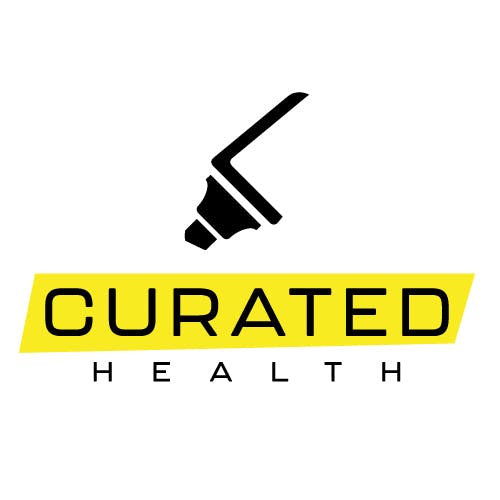
For many decades, the delivery of healthcare was solely possible in person between a patient and a doctor, starting from diagnosis and receiving medical treatment, to performing surgical procedures for the patient. These days telehealth services are on the surge along with disruptive technologies which are transforming the delivery of care. Imagine a patient of tomorrow “Sarah.” Sarah is a 24-year-old young woman requiring a procedure that is not common in her country. However, by leveraging immersive technology, Sarah could be able to talk and collaborate with doctors all around the world. As doctors plan things ahead looking into Sarah’s patient profile, they would be able to derive better clinical outcomes and decide what is best for her. Such technologies fall in the realm of the metaverse, and along with blockchain technology and Non-fungible tokens, these technologies collectively for the world of Web3.
The term Web3 was coined by Gavin Wood, one of the founders of Ethereum in 2014. In this piece, we explore the impact of Web3 in the “New Era of Healthcare”.
What is Web3?
Before moving on to how Web3 can revolutionize healthcare, we explore what it means.
Web3 is a version of the Internet protocols organized around individuals rather than centralized companies. Web3 infrastructure is based on open-source software and is maintained by an open community of contributors. Web3 initiatives use blockchain-based tokens to allow an aligned digital community to share in a platform’s ownership, access, and governance. Today, the concept of Web3 is set out to drastically improve how we deliver and pay for healthcare. On one strand, healthcare is moving towards patient-centred healthcare, on another web3 is decentralizing data by transferring ownership to the individual. In a web3 world, data is getting decentralized towards the patient, making a combustive shift in healthcare.
One component of Web3 is the metaverse. The metaverse is a parallel reality or visual representation of reality. In the past, virtual representations were experienced through augmented reality, virtual reality, or mixed reality through various devices. The key difference between Web3 and metaverse is that the virtual worlds are persistent with the use of tokens. The primary technology enabling the shift to Web3 is blockchain. Blockchains are distributed and encrypted databases that allow data to be stored and transferred securely in a way that no one except the data owner can tamper with. And this is done through immutable ledgers. The third pillar of the Web3 revolution is NFTs. NFTs are non-fungible, irreplaceable tokens, also known as unique digital certificates, registered on a blockchain, that is used to record the ownership of an asset.
Now that we have cleared out what the keywords mean, let’s understand how Web3 can transform the healthcare industry.
Surgical Operations and Web3
Currently, surgeons use technologies such as AR, VR, AI, and minimally invasive surgeries for augmenting patient outcomes. Leading hospitals and universities use these technologies for surgeries because this gives a 3-D view of a patients’ body, and helps to interpret surgical plans, and perform procedures. However, AR and VR alone are not sufficient to make appropriate clinical decisions. For instance, VR systems are limited to specific clinical settings and mobile VRs offer pocket-size immersion. Here’s where the metaverse comes into play.
Imagine the patient Sarah again. To understand how her procedure is performed, doctors can create a digital twin of Sarah. A digital twin is a virtual model, or simulation, of any object, process, or system, generated using real-world data, for the purpose of learning more about its real-world counterpart, in this case, patient Sarah. This digital twin can act as a “test dummy” to predict everything from Sarah’s surgery to the reactions she will have to specific medications, all the way to the most suitable surgical pathway. The final outcome is that the collective care team can make better clinical decisions and perform procedures with reduced risks.
These doctors can also collaborate with surgeons in different locations who are invited into the metaverse of Sarah’s care room. This is where it gets interesting. To cure Sarah’s rare disease, global experts could be invited into Sarah’s care space to provide novel therapies or treatment outcomes. If those suggestions are successful, the experts from around the globe would be compensated in a cryptographic token for aiding in Sarah’s recovery.

Patient Data and Web3
In today’s healthcare, data is often shared between multiple organizations in a way that's both inefficient and opaque as far as the owners of that data are concerned. The fact that health records are usually stored on centralized servers means that our data is at risk of being stolen or mishandled.
The fact of security is more important now than ever with medical data expanding exponentially. The doubling time was an estimated 50 years back in 1950, it accelerated to 7 years in 1980, 3.5 years in 2010, and a projected 73 days by 2020, according to a study in Transactions of the American Clinical and Climatological Association.
With blockchain integrated into healthcare, patients can now own their data. Patients of tomorrow can have their data decentralized with secured encryption and cryptography. For instance, if Sarah wants a particular doctor or hospital to perform her procedure, she can share her accurate data including her medical history with the concerned people through her consensus. Moreover, interaction recorded in blockchain coupled with cryptocurrency can clear payments that utilize Sarah’s data effectively. Sarah being compensated for her data use could reduce the healthcare cost burden on her.
Can Patients Monetize Their Healthcare?
Let’s imagine that with metaverse, doctors have been successful in performing Sarah’s procedure with improved accuracy. However, can Sarah help others like her going through the same journey? If Sarah’s healthcare data and journey were minted or stamped as a single or range of NFTs, she could choose to share her data on platforms that could be the web 3.0 version of “patients like me.” Security concerns should not be an issue since NFTs come with an inherent feature to be tracked and traced. Sarah would be able to see where it ends up and hold those who used it without her permission accountable since she is the sole owner of her data, as certified by the NFT authentication.
With an NFT approach, companies offering digital health services could encourage patients to participate in studies by contributing their data and earning from it. Other third parties interested in utilizing the data for research or developing new products could reach out directly to patients on a digital marketplace. The main difference compared to the traditional approach is that patients really do have the choice to share their data in a more informed manner.
Web3 could bring out a radical change in the healthcare world. Patients of tomorrow could see a world where healthcare data is decentralized, personalized and traced ultimately leading to transparency, accessibility and affordability of care.
About the Author
Sajjad Kamal is the Healthtech Venture Partner at Global Ventures. He co-founded YC-backed AlemHealth, Ltd.
Sajjad also co-founded Beneple, was the Chief Technology Officer, and is a Healthcare Transformer at StartUp Health. He is currently the CTO of Thakaa Centers, a network of tech innovation centers in Saudi Arabia.
He graduated with a BMath from the University of Waterloo in Canada.


